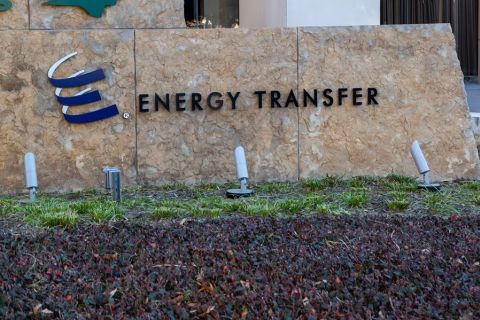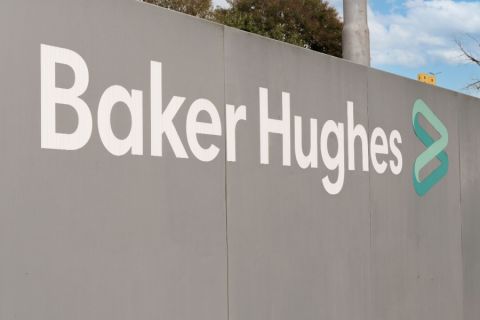After dropping across the board in mid-2010, natural gas liquids (NGLs) prices finished on a high point as stronger demand for liquids and tightened supplies helped to push butane, isobutane and C5+ prices to their highest levels in more than a year.
The largest increase for any NGL on a year-on-year basis was for C5+, which rose 24% from $1.70 per gallon (gal) in December 2009 to $2.10/gal in December 2010 at Mont Belvieu. Over the same period, it rose 17% to $2.06/gal from $1.76/gal at Conway. Befitting its role as the NGL most closely aligned with crude oil and gasoline, this price surge coincided with increased crude prices in the latter half of the year.
Prior to peaking at the close of 2010, C5+ prices had peaked on a monthly basis at $1.96/gal at Mont Belvieu and $1.88/gal at Conway in April before hitting a low of $1.65/gal at Mont Belvieu and $1.59/gal at Conway in July due to lower and higher supply levels, respectively.
The year-on-year gains posted by isobutane and butane at Mont Belvieu and Conway weren’t quite as high as those for C5+ at those hubs, but they reflected a stronger market in late 2010 for heavier NGLs. Much of the energy market is now focused on E&P operations in liquids-rich plays as well as increased demand for winter-grade gasoline.
Mont Belvieu isobutane increased 10% to $1.77/gal in December 2010 from $1.61/gal in December 2009, after having bottomed out at $1.39/gal in August before refiners began to switch to winter-grade gasoline in the fall, boosting demand. Conway isobutane rose 8% in December 2010 to $1.71/gal from $1.58/gal in December 2009. The lowest monthly average for isobutane at the hub was $1.36/gal in July.
Butane prices rose at a greater rate, year-on-year, because butane is favored over ethane as a feedstock for ethylene at various times. However, by the close of 2010, ethane had regained its status.
Year-on-year, Mont Belvieu butane rose 15% in December 2010 to $1.70/gal from $1.48/gal in December 2009, while Conway butane rose 7% to $1.68/gal in December 2010 from $1.57/gal in December 2009. July was the weakest-performing month for the NGL as it fell to $1.35/gal, monthly average, at Mont Belvieu and $1.25/gal, monthly average, at Conway.
Propane posted smaller year-on-year gains primarily due to its strong prices earlier in the year when heating demand was high throughout much of the country. Although prices fell throughout the spring and summer, they had gained strength by the close of 2010.
Mont Belvieu propane rose 9% to $1.30/gal in December 2010 from $1.19/gal in December 2009 with a peak of $1.31/gal in January 2010 and a low of $1.01/gal in July. Conway propane rose 2% to $1.24/gal in December 2010 from $1.22/gal in December 2009 with a peak of $1.30/gal in both January and February and a low of 93¢/gal in June.
The lone NGL to experience a year-on-year pricing decline was ethane, which suffered from a combination of a stagnant economy and high storage levels due to strong production. Mont Belvieu ethane fell 11% to 62¢/gal in December 2010 from 70¢/gal in December 2009 with a high of 76¢/gal in January and February and a low of 42¢/gal in July. Conway ethane had a worse year as it dropped 18% to 52¢/gal in December 2010 from 63¢/gal in December 2009 with a high of 67¢/gal in January and a low of 27¢/gal in July.
The harsh winter of 2010 had a strong effect on NGL prices throughout the year. It drove up prices on the spot market in the early part of the year, and took natural gas out of storage at the close of the year.
While NGL prices improved year-on-year and on a 12-month basis for 2010, natural gas prices fell in both cases. Analysts expect dry gas to continue to trade at a stagnant rate in 2011 even as the market for liquids remains strong.
Raymond James & Associates cut its forecast for U.S. gas prices due to strong supply growth. The firm’s 2011 estimates drop from $4.25 per thousand cubic feet (Mcf) to $3.75/Mcf.
“Unfortunately for energy companies, this supply problem may be around for a while. We expect that the U.S. will remain structurally oversupplied with gas until we see a step-change upward in demand,” the company reported.
However, FBR Capital Markets forecasts a strong gas market in the second half of 2011. It raised its pricing outlook from $4.50/Mcf to $5.50/Mcf. The company’s forecast for the first-half of this year is for gas prices to average $4.50/Mcf.
“We believe that current operating margins are insufficient to incent the required level of shale-gas investment needed to balance the market beyond 2011. As such, either cost structure needs to adjust materially lower, or natural gas prices need to go higher, for margins to become investable,” according to the firm.
Gas-supply growth in the first half of 2011 will be driven by noneconomic issues such as held-by-production drilling and completion of wells that were previously drilled.
– Frank Nieto
Unconventional Plays Boost Local Employment Rates
The economic impact of shale development represents a significant break from the past, according to Timothy Considine, senior professor of energy economics and director of the center for energy economics, public policy and finance at the University of Wyoming.
Results from his study of the correlation between employment and shale plays illuminate the employment potential of the plays and its effect on state and county economies.
“In past oil and gas development plays, you have a burst of initial development,” he says. “Like building a big, coal-fired power station or wind farm, you get a lot of jobs up front, but once development starts, the labor impact drops off. But shale development is different, for several reasons.”
First, shale-gas development is continuous, he observes. If the resource base is as large as the Marcellus, it can last decades. “That’s a compelling statement, considering the current disfavor of the general public when it comes to gas drilling in Pennsylvania.”
The need to continue drilling, given steep production-decline curves for typical Marcellus wells, implies that the perspective on gas drilling and its socioeconomic impact “shifts from extraction paradigms to manufacturing,” he says. As opposed to conventional drilling, where only a few structures are built, large local service and transportation systems are required to sustain unconventional production.
Considine evaluates the economic impacts of the shale developments in three ways. First, he considers the business-to-business spending and the amount of infrastructure required. The local support industry for shale-gas drilling grows quickly to support producers, which generates local jobs.
This local focus is new, Considine says. “Before, people would think it’s just going to be a lot of pickup trucks with Texas and Oklahoma license plates. But a lot of those license plates are from Pennsylvania.”
Second, due to the expansive area of shale development, the land requirements are fairly high, even though the individual footprints of wells are small. Energy companies spend large amounts for land and lease rights, and later, in royalties. Thus, property values are increasing.
When looking at the inflow of capital, Considine considered both induced spending and business-to-business spending. Initially, he looked at the direct spending the companies engage in and their suppliers. He identified spending in more than 100 North American Industry Classification System (NAICS) codes. He also considered secondary spending by using models that estimate the supply-chain impacts of rounds of re-spending, including induced impacts.
He determined that companies are hiring locals for their workforce. This contributes to more local spending, and a higher amount of recirculation of that revenue back into local economies.
Third, Considine looked at employment statistics. “I compared the employment impacts from a variety of shale studies. We measured those impacts in 2009. From that, we estimated that many jobs were induced directly and indirectly by Marcellus activity. Other shale plays like the Barnett are farther along, and production is much higher, so the employment impact is correspondingly higher.”
To combat skepticism from critics who accuse oil and gas companies of producing biased statistics, Considine studied labor markets, drilling and unemployment to see if any significant trend resulted.
According to his results, five states with major shale drilling were below the national average unemployment rate. The established Barnett shale play saw 132, 497 job gains in 2008, and the Marcellus area gained 57, 357 jobs in 2009. When looking at the unemployment rates—Texas at 8.1% and Louisiana at 9.0%—he found them to be lower than the national average.
“The current national average unemployment rate is 9.6%. All the unemployment rates for the five major shale states are below the national average.”
In fact, the data show counties close to drilling have unemployment rates lower than the national average—by as much as 1.6% or more.
“When you look at the Marcellus region, there is a clear pattern. As the level of drilling increases, the unemployment rates in those counties go well below the statewide average, particularly in the Northeast and Southwest, where there has been a lot of activity during the past years.”
In the South, energy companies support the economies of four major Texas cities. Austin, the state capital, ranks first in the U.S. for its level of recovery from the recession, according to a recent report by the Brookings Institution Metropolitan Policy Program. Dallas, home to many energy companies and their capital providers, ranks fourth. San Antonio, near the Eagle Ford shale play, weighs in at eleventh, and Houston, the energy capital of the world, ranks fifteenth in the U.S.
Conversely, proposed legislated drilling suspensions would have substantial adverse effects statewide and on local counties, Considine says. “It would mean the potential loss of thousands of jobs.”
“I think from a national energy-policy perspective, the gas industry is making a real contribution to our economy, not just in providing clean gas for markets, but also creating jobs in an economy that is suffering from rather high rates of unemployment,” he says.
Ladies and gentlemen, start your resumes.
– Meredith Freeman
Caiman Energy’s Cantrell Expounds On Marcellus Ethane Problem
“Ethane is one of the largest, most commonly used petrochemical feedstocks out there,” says Art Cantrell, director of business development for Caiman Energy. “Due to this, it’s essential to find a way to transport the ethane in the Marcellus shale to the Gulf Coast, either via pipeline or vessels, as the Sunoco project is proposing.”
A tremendous amount of investment is needed in both rich- and lean-gas areas of the play, he says. “It’s no question that, for a midstream developer like Caiman, we like the rich-gas areas. Clearly there’s a lot of opportunity there.”
Due to the recently approved gas-quality settlement allowing 17% ethane, Texas Eastern Spectrum Pipeline has warmed to the idea of absorbing more ethane from the rich-gas area of Green County, known as the waiver zone, which may be a viable alternative to a mixed-NGLs or ethane-only pipeline.
“Although this could be a much-needed solution to the problem, it is essential to ensure there is enough blending occurring throughout the process to prevent their customers on the East Coast from seeing increased ethane supplies,” warns Cantrell.
The proximity of high volumes of lean gas (ethane values seen below 2%) to the rich-gas areas of Green County provides ample opportunity for blending of both lines to avoid issues downstream. Producers could blend equal volumes of 17% and 2% ethane, allowing them to fit well within the gas-quality spectrum, he says.
“The pricing issue, layered on top of gas equivalency, might be the best option for producers independent of what solutions do or don’t develop. It’s very important for a start-up like Caiman to be very efficient and focused on its capital investment,” says Cantrell.
The industry should change the way it thinks about ethane and start thinking about it in terms of production, he advises. He is contrarian to “the way the market works right now,” where production of liquids is more profitable than that of gas.
Cantrell points to a recently announced joint venture as an option to move ethane to the Gulf Coast. MarkWest Liberty Midstream & Resources LLC, a partnership between MarkWest Energy Partners LP and The Energy & Minerals Group, and Sunoco Logistics Partners LP, has announced a combined pipeline and marine project for ethane produced in the Marcellus shale. The Mariner Project is anticipated to have initial capacity to transport up to 50,000 barrels per day of ethane to Gulf Coast markets as soon as the second quarter of 2012, and could be scaled to transport higher volumes to support additional ethane production from the Marcellus region. MarkWest Liberty has been working with key producers and petrochemical consumers since late 2009. The project is supported by Range Resources Corp. and Chesapeake Energy Corp., among others.
Another option is to ship ethane on a liquefied-petroleum-gas vessel, although the estimated 20% useable-storage capacity on the vessel has been frequently questioned with regard to efficiency. Other concerns include the ability to transport the ethane on these vessels from Philadelphia, in this case, to the Gulf Coast, where most of the refineries are located. Other concerns involve the Jones Act, which regulates oil and gas transportation, he says.
“Transportation is a large part of the issue. Will the petrochems in the Gulf Coast ultimately have the last say regarding purchasing and consuming the product? Or is it better to ship it out of the country, as is being discussed with European crackers, in order to avoid dealing with the Jones Act all together?”
Many opportunities continue to surface in the Marcellus shale, but challenges arise as well, he concludes.
– Cristina May
Deloitte LLP: Energy Execs Plan Portfolio Change-ups For 2011
Following the Gulf of Mexico’s Macondo disaster and another year of white-hot interest in unconventional shale-gas production, investors and managers are looking to optimize their portfolios. The recently held 2011 Oil & Gas Conference, produced by Deloitte LLP in Houston, provided food for thought as a multitude of energy executives shared their thoughts about energy issues for 2011.
Gary Adams, Deloitte’s vice-chairman of the oil and gas practice, forecast “a potential shake-up” in the Gulf of Mexico. “Companies are looking at their portfolios and determining their risk exposures. This could end up with an increase in merger and acquisition activity. We’ve already seen some companies announcing that they are exiting the Gulf.”
He says producers who hope to maintain deepwater competencies may instead look to locations overseas. Also, given current uncertainty over permit and liabilities, oilfield service suppliers are at risk. There could be profound changes, he warned.
Oscar Brown, managing director and head of Houston Energy Investment Banking, Bank of America Merrill Lynch, says, “The Macondo disaster likely will not push out oilfield services from the Gulf, but I do think that scale has become that much more important.”
He thinks that wells could take as much as 25% longer to drill, rigs could be on location longer and more supply boats will be needed to continue offshore operations with new regulations. He predicts some consolidation.
Providing perspective from the north, Mark Little, senior vice president for Suncor Energy, said that Canadian oil sands could supply current oil production for “just under 400 years.”
Little noted that oil-sands production should ramp up “from just over 1 million barrels per day to 3- to 4 million barrels over the next decade or two.” Branko Terzic, executive director of Deloitte’s Center for Energy Solutions, cautioned that oil-sands producers rely upon low-cost natural gas for their production systems. “As long as that continues, you’re going to have production there,” Branko said. Increased deliveries of heavy crude should reach the U.S. by 2013 if the Keystone XL oil pipeline expansion gains approval by mid-2011.
Meanwhile, Steve Kirchhoff, ExxonMobil’s Americas Natural Gas vice president, told attendees, “You’ve probably heard this term, ‘100 years of gas supply.’ We really believe that.”
Kevin Meyers, senior vice president of exploration and production for ConocoPhillips, agreed. “Unconventional shale drilling has yielded an incredible abundance of natural gas that people weren’t expecting even five years ago. It’s a game-changer. We would have to have a heck of an increase in demand to see price movement above $6 per million Btu.”
That sentiment was echoed by Adam Sieminski, Deutsche Bank’s chief energy economist. “Given the prolific nature of shale gas, it’s not out of the question that gas could be stuck below $6 for a seriously long time. You would have to be completely blind to the differential between natural gas selling for $4 and oil selling for three or four times that level, on a Btu basis, if you cannot find a way to take advantage of those low gas prices.”
Sieminski said the price differential “is a pot of gold at the end of the rainbow” and that “exporting LNG may make a lot of sense.”
Sieminski looks for the power industry to switch from coal-fired generation to natural gas. “This is the good news,” he said, adding, “This is why I think we are not going to get to $3 for natural gas and stay there. Coal prices have been going up.”
Coal-to-gas utility repowering is also supported by Marathon Oil Corp.’s chief financial officer, Janet Clark, who called coal-fired generators “the biggest source of CO2 emissions in any industry that you could find.” Reducing carbon by “conversion or a shift towards natural gas could be very easily effected,” she said.
Still other speakers dwelt on the important interplay between North American gas and power industries. Deloitte’s Terzic noted that many U.S. regions that now have subpar electric-generation reserve margins (under 15%) may see brownouts when the economy recovers. He said the recession and weather postponed that eventuality to 2011 or later.
“It takes five to six years to build new firm electric-generation capacity. Firm capacity cannot be intermittent wind or solar generation because you cannot rely on the wind blowing and the sun shining uncovered when you need them,” he said.
The bridge to stable U.S. power supplies may be more gas consumption at inefficient gas-fired peaking plants. Yet, in 2011, be careful if you are a public company buying a whole lot of gas unconventional resources right now, cautioned BofA’s Brown.
“Certainly there are a lot of assets available. It always spooks me when there are a lot of willing sellers, because maybe the sellers know something that the buyers don’t.”
Also, for now, Brown said deal premiums are higher than expected and the market is open to merger announcements. “We are actually seeing the vast, vast majority of buyers’ equities going up when they announce a deal.”
A noteworthy 2011 trend is that of undervalued producers raising cash by selling assets to higher-multiple midstream master limited partnerships (MLPs), which, Brown noted, “pay a lot of money for gathering assets and pipelines.”
MLPs are here to stay, he said. “If you can sell a midstream system for 10 or 11 times EBITDA, and if you trade at only four times, you don’t have to think too hard about that.”
Operationally, upstream firms are also refocusing on wet-gas plays with substantial NGLs due to liquids now tracking higher-valued oil prices, according to Deutsche Bank’s Sieminski.
BofA’s Brown noted that “unconventional oil works fine at $80 a barrel.”
Marathon’s Clark said, “The Bakken, Woodford and Niobrara—these are operations where you can dial it up and dial it down. It’s a lot easier to lay down a land rig than it is to stop halfway through an ultra-deepwater development in Angola.”
Sunoco’s chief executive Lynn Elsenhans said Sunoco’s highest-return growth opportunities are midstream logistics, followed by investments in its strong retail fuels network. Sunoco may acquire well-situated ethanol plants if available at below greenfield construction costs.
Quipped Deloitte’s Terzic, “If returns are reasonable, then capital will flow there. Capital goes where it is welcome.”
Most of the executives agreed that their operating portfolios would likely be rebalanced away from natural gas and domestic deepwater and toward more unconventional oil or NGLs.
– Greg Haas
BDO Survey: CFOs See Capital Flowback, Legislative Challenges Ahead
Capital is flowing back into the E&P industry. More than half (56%) of chief financial officers (CFOs) report a greater ability to access capital, with credit either the same or better than last year, according to a new study by accounting and consulting group BDO USA LLP. The study examined the opinions of over 100 CFOs in E&P companies.
Meanwhile, fewer CFOs report that a lack of capital has caused delays or terminations of oil and gas projects during the past 12 months. But 54% note that legislative changes will be the most important factor inhibiting U.S. energy industry growth in 2011. And some 40% cite legislative challenges as the biggest financial hurdle in the year ahead.
The legislative and regulatory environment was a major cause of delays or terminations of oil and gas exploration or processing projects during the past year, according to the CFOs responding. This could have a significant impact on current midstream projects, especially pipelines, considering the unfavorable publicity resulting from pipeline-leak events in 2010.
Among respondents who experienced a project delay or termination in 2010, 61% cited federal or state environmental regulations, 58% cited legislative changes and 39% cited the regulatory moratorium on drilling activity.
“One message came down loud and clear in this year’s survey—that legislative changes represent the biggest threat to growth in the oil and gas industry,” says Charles Dewhurst, partner and national leader of the Natural Resources industry practice at BDO. “With the midterm election results, energy executives can anticipate an easing in the flow of new legislation impacting the industry. But will this be enough to relax the permitting process for drilling?”
According to Douglas-Westwood’s World Onshore Pipelines Report for 2011-2015, the recent onshore pipelines market has been affected by short-term macroeconomic factors and will see an increase in construction associated with these rising rig-count numbers.
When asked what is the most important factor driving the overall growth of the U.S. oil and gas industry in 2011, 18% of CFOs cited new production technologies—nearly triple the number from 2009.
– Meredith Freeman
Recommended Reading
Marathon Oil Declares 1Q Dividend
2024-04-26 - Marathon Oil’s first quarter 2024 dividend is payable on June 10.
Talos Energy Expands Leadership Team After $1.29B QuarterNorth Deal
2024-04-25 - Talos Energy President and CEO Tim Duncan said the company has expanded its leadership team as the company integrates its QuarterNorth Energy acquisition.
Energy Transfer Ups Quarterly Cash Distribution
2024-04-25 - Energy Transfer will increase its dividend by about 3%.
ProPetro Ups Share Repurchases by $100MM
2024-04-25 - ProPetro Holding Corp. is increasing its share repurchase program to a total of $200 million of common shares.
Baker Hughes Hikes Quarterly Dividend
2024-04-25 - Baker Hughes Co. increased its quarterly dividend by 11% year-over-year.





